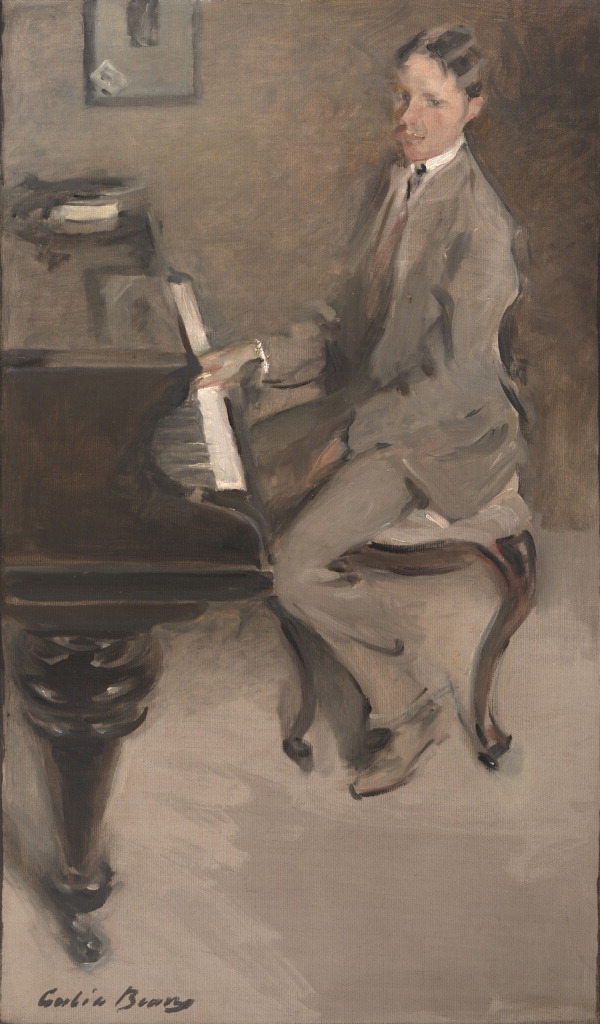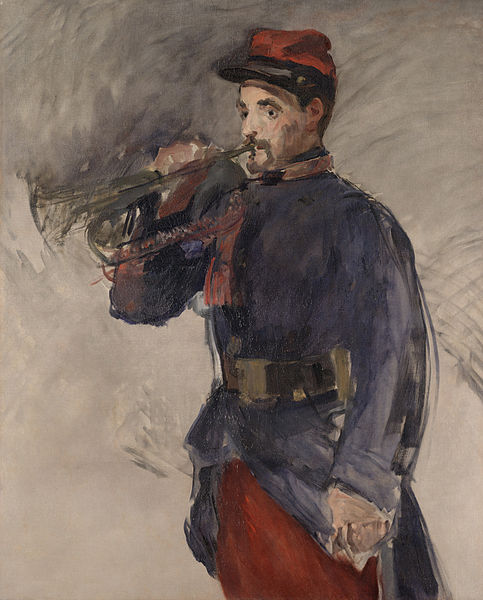Last spring, I learned about something called the “Personal Response” tour while attending the NAEA convention. One of my colleagues at the Memphis Brooks Museum of Art said that they use the Personal Response tour as a team-building exercise with staff. It also provides opportunities to slow down, look closely, and reflect. We used the Personal Response tour during docent training this week to get our docents to slow down and reflect on their own relationships to works of art in the DMA collection. Docents tour with the same group of people each week, so they were divided into groups based on their touring day. In this way, it helped them get to know each other a bit better, too.
The Personal Response tour was formulated by Ray Williams, who is now at the Blanton Museum of Art at the University of Texas. During this tour, docents were asked to select a card that contained an open-ended prompt to guide their time in the galleries. I took some of the prompts from an article written by Ray Williams* and composed ten additional prompts for docents. They were given time to explore the galleries and select the work of art that, for them, was the best response to their prompt. After selecting a work of art, docents spent ten minutes jotting down their thoughts and reactions to their prompt. After ten minutes had passed, we came back together and everyone shared their response with the group. I was amazed by how open our docents were to this experience, and also how thoughtful their responses were. Below are just a few of their selections:
Prompt: Find a work of art that reminds you of something from your past…What are the connections?
One docent had to take piano lessons when she was little and did not enjoy them. She felt that the young person in At the Piano is obviously disinterested in playing the piano, and that was her attitude when she had to practice, too. But now she wishes that she had spent more time practicing and had really learned to play the piano. She has a piano in her home today and still wishes she knew how to play it.
Prompt: Find a work of art that embodies some aspect of peace.
One of the docents selected a shroud or ceremonial hanging (sekomandi) from Indonesia. The shroud was owned throughout someone’s life and was then used to bury them following their death. The docent felt that the shroud conveyed a message that “everything will be okay, because you’re joining all of your ancestors.”
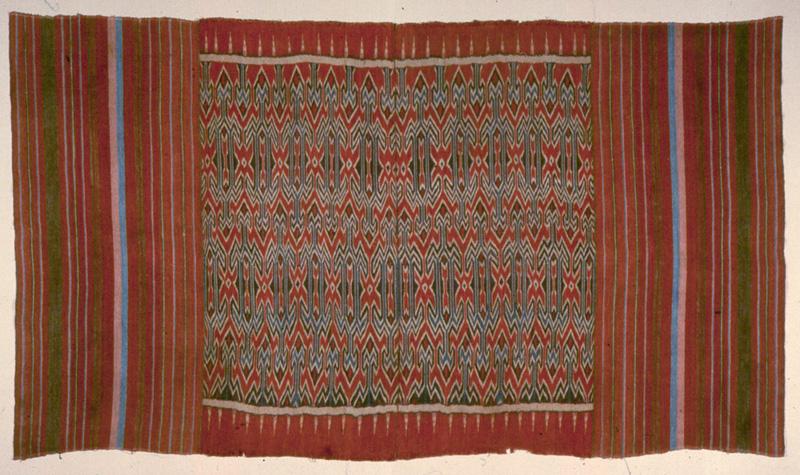
Shroud or ceremonial hanging (sekomandi), Toraja people, Indonesia, probably late 19th century, Dallas Museum of Art, the Steven G. Alpert Collection of Indonesian Textiles, gift of the McDermott Foundation, 1983.126
Prompt: Find a work of art that reminds you of childhood. What resonates with you? What elements of childhood do you wish were still a part of your life?
The Beach at Trouville reminded one docent of spending her summer vacations at a family home in Ogunquit, Maine, visiting her grandmother. She fondly remembers the beautiful beaches, like the one in the painting. She and her husband still have a house in Maine, but it is not near a beautiful beach like the one from her childhood.
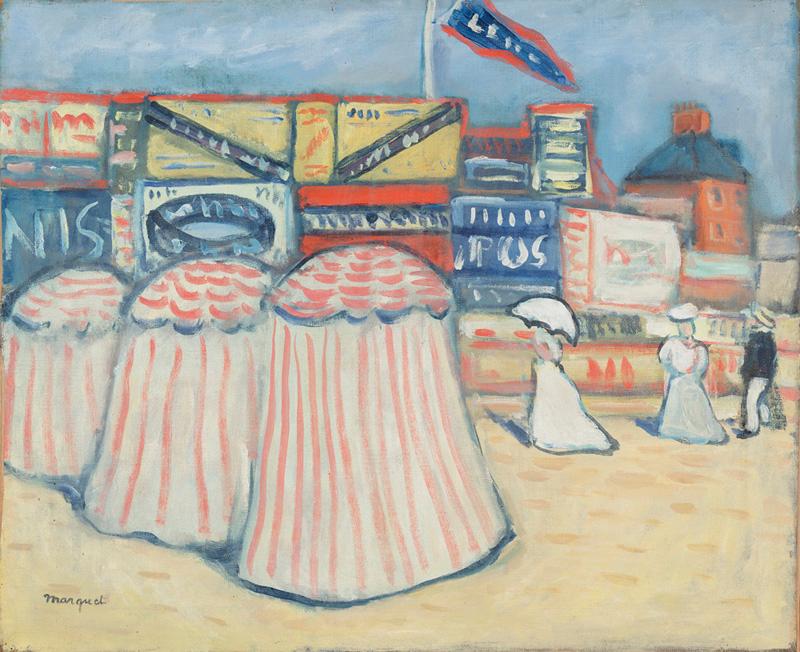
Albert Marquet, The Beach at Trouville, c. 1906, Dallas Museum of Art, gift of the Meadows Foundation Incorporated, 1981.121, © Albert Marquet Estate/Artists Rights Society (ARS), New York/ADAGP, Paris
Prompt: Select a work of art to take on a date. Where would you go? What would you do? What would you discuss?
Andrea’s Response: I would like to go on a date with The Bugler because 1) his ability to play the bugle so well indicates at least some level of intelligence; 2) he is decently attractive and well-dressed; and 3) if the dinner conversation starts to wane, he can just play me some tunes.
Prompt: Select a work of art that you would like to hang above your sofa. Why? What would visitors to your home learn about you?
My Response: I would select the sword ornament in the form of a lion. I’m a Leo, so I associate with the lion in that we’re proud and protective of those we love. But I also think this lion has a huge smile on his face, and I like to laugh and be playful, too.
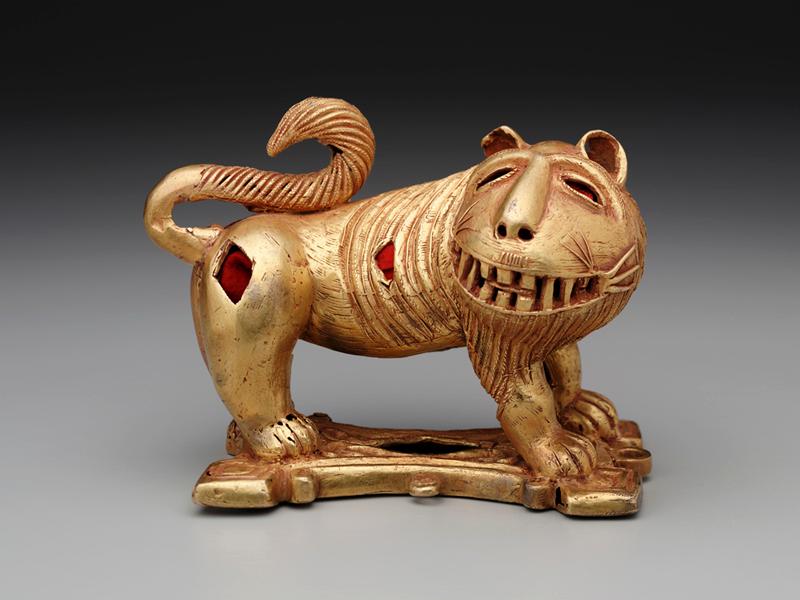
Sword ornament in the form of a lion, Asante people, Ghana, c. mid-20th century, Dallas Museum of Art, The Eugene and Margaret McDermott Art Fund, Inc., 2010.2.McD
I’m going to pose one final prompt for all of you–what work of art from the DMA collection embodies, for you, pure joy? Why? I can’t wait to read your responses!
Shannon Karol
Manager of Docent Programs and Gallery Teaching
*Ray Williams, “Honoring the Personal Response: A Strategy for Serving the Public Hunger for Connection,” Journal of Museum Education, Volume 35, Number 1, Spring 2010, pp. 93-101.
